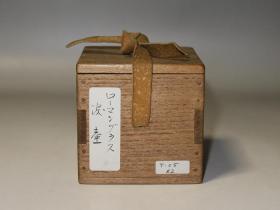
亚洲唯一!古罗马琉璃泪壶——爱之泪,穿越千年化成蜜,世间最凄美的收集眼泪的玻璃瓶
¥ 35000 九品
仅1件
海外亚洲
认证卖家担保交易快速发货售后保障
制作者古罗马帝国
年代宋元及以前 (1367年及以前)
材质琉璃
尺寸5 × 4 cm
上书时间2020-12-15
- 在售商品 暂无
- 平均发货时间 暂无
- 好评率 暂无
- 店主推荐
- 最新上架
商品详情
- 品相描述:九品
- 商品描述
-
注意:
1,最后两张图是葡萄牙贝娅博物馆藏品(A Lacrymatory, at the Beja museum in Portugal)和土耳其安卡拉安那托利亚文明博物馆藏品(Anatolian Civilization Museum)的藏品,仅供参考,不是商品。
2,东京直邮,售价包括EMS运费(约人民币500),下单后修改价格。
高约5 cm×底部直径约4 cm
重约23.7g
罗马帝国,公元1/3世纪
状况良好
出处:销售商保证以合法方式获得该藏品(东京,私人收藏)
碧绿色玻璃(琉璃)器,瓶身风化层浅,有不均匀小气泡。口沿轻薄,瓶口无伤,底部有吹管断料形成的不规则渣口。自然光线下整体呈现七彩蛤蜊光,熠熠生辉。琉璃易碎,出土时大多破裂,品相完整者弥足珍贵。
在希腊和罗马的古墓中发现的小玻璃瓶,被早期学者浪漫地将其命名为泪壶(tear catcher)或泪瓶(lachrymatory bottle)。古代人利用其收集眼泪的想法似乎是民间传说,但所有人都爱上了这个传说中诗意的自负。
古罗马时期(公元前后)的葬礼上很罕见的陪葬品——瓶口细长,壶身小巧的玻璃制“泪壶”,瓶子里装的是死者恋人和家属的眼泪。丧礼进行过程中,将哭丧者的眼泪收集起来,最后一起下葬,眼泪越多代表对死者的敬爱越多,据说也雇用专业哭丧女在坟前哭泣,以显示死者受人敬爱。
一位化妆品历史学家或一位玻璃专家可以在30秒内告诉客户这些瓶子不是伪造的赝品,所有人终将发现真理已然存在,那时我们每个人都可以选择自己的信念。
这种习俗在19世纪末的维多利亚时代得以重现,玻璃匠人将盛满泪水的容器进行装饰和加工,增强了收集“失去所爱之人的悲伤”习俗的仪式感。与此同时,还出现了一种新说法:“瓶中泪水蒸发殆尽之际,才是服丧终结之时”。
罗马玻璃,指罗马帝国期间(公元前27年~公元395年)所制作的玻璃器总称。其涵盖的范围相当广,东到叙利亚,西达西班牙,南至埃及,北抵日耳曼;内容种类多样,举凡简单的日用品到精致的工艺品都有,例如杯、盘、壶、瓶、几乎是现今使用的所有玻璃制品。
当时由于罗马帝国的强盛,使许多技艺高超的工匠定居于城市,加上吹制玻璃技术的发明,使原来的单件制作得以大量生产,玻璃制品在此时全面进入庶民阶级的日常生活中,这也让罗马的玻璃工艺获得长足进展,并可和当时的陶器工艺并驾齐驱。
毫无疑问,罗马在地中海世界中的统治地位,即其在政治,军事和经济方面的统治地位,是吸引熟练工匠前来罗马的重要因素。但同样重要的是,罗马工业的建立离不开吹玻璃的发明。这项发明革新了古代玻璃的生产方式,使其与其他主要工业(如陶器和金属器皿)处于同等水平。吹玻璃使工匠可以制作比以前更多的形状。结合玻璃固有的吸引力,这种适应性鼓励人们改变口味和习惯,例如玻璃杯迅速取代了陶器。
在罗马第一任皇帝奥古斯都(Augustus)统治期间(公元前27-公元14年),随着陶器和纺织制造等几大有效产业的发展,玻璃制造工艺从东方被采用并发展成为一种工业,逐渐在罗马普及。至一世纪中叶,玻璃在罗马国内市场上已与陶器相媲美。被用于餐具和存储容器,以保存从腌制鱼到精细香水的所有物品。
玻璃成为罗马人每天日常活动中的重要物品,清晨女佣将香精乳液涂在女主人身上,为她的社交活动做准备。傍晚奴隶用玻璃器皿盛放食物、水果和酒,摆放到餐桌上。玻璃也是罗马葬礼中重要的陪葬品,罗马人习惯在坟墓中陈设各种家庭物品,以增加来世的舒适感。
古代玻璃掩埋于地下数千年之久,内部杂质受时间和环境影响变质,氧化后形成七彩包浆,色彩缤纷,绚丽夺目,世称罗马玻璃,极其罕见贵重。由于存世完整者罕见,现在欧美日许多珠宝设计师,会将出土的罗马玻璃碎片与金银等贵金属镶嵌结合,制造成独具特色的新派古典首饰。
罗马玻璃迎光侧视,可见五光十色,此即所谓七彩蛤蜊光,是器物穿越千年后釉面自然氧化的结果。蛤蜊光的反应除与制作配方息息相关外,还和储藏环境有关。通常而言,传世琉璃难见蛤蜊光,出土品相对多见,但也仅相对传世品而言。蛤蜊光形成原因主要在于氧化程度,埋藏环境如果无酸,固难形成彩色包浆。
琉璃的斑驳蛤光,在灯光下具有宝石无法比拟的光艳,高古琉璃器具有线条、造型、颜色三美,需要静静品味。线条是感受视觉的启发,造型是透视艺术的焦点,颜色则是技术融合的结晶。
Ancient Roman glass Lachrymatory(tear bottle)
Size: 5×4cm
Material: glass.
Date: Roman, 1st/3rd century A.D.
Origine: Roman empire.
Condition: good condition
Acquired: Tokyo, private collection
Provenance:The Supplier warrants that is has obtained this lot in a legal manner.
Small glass bottles were often found in Greek and Roman tombs, early scholars romantically dubbed them lachrymatories or tear bottles. The idea that people were collecting tears in them seemed like folklore. fell in love with the poetical conceit as much as anyone else.
A cosmetic historian or a glass expert could have told a customer in 30 seconds those bottles are not lachrymatories ,that the scientific truth will be uncovered eventually (it already has), until then, each of us can choose our own belief.
Doubtless Rome'semergence as the dominant political, military, and economic power in theMediterranean world was a major factor in attracting skilled craftsmen to setup workshops in the city, but equally important was the fact that theestablishment of the Roman industry roughly coincided with the invention ofglassblowing.
This inventionrevolutionized ancient glass production, putting it on a par with the other majorindustries, such as that of pottery and metalwares (as 20.49.2-12). Likewise, glassblowing allowed craftsmen tomake a much greater variety of shapes than before. Combined with the inherent attractivenessof glass—it is nonporous, translucent (if not transparent), and odorless—thisadaptability encouraged people to change their tastes and habits, so that, forexample, glass drinking cups rapidly supplanted pottery equivalents.
During the reign of Rome’s firstemperor, Augustus (27 B.C.-A.D. 14), as several well-established industriessuch as pottery- and textile-making were being expanded, the craft ofglassmaking was adopted from the East, turned into an industry, and adapted toRoman taste. By the mid-first century A.D.glass rivaled pottery in the domestic marketplace.
It was used fortableware and storage containers to hold everything from preserved fish to fineperfumes. Glass featured strongly in the Romandaily routine, from the early morning, when maids would apply perfumed lotionsto their mistress in preparation for her social rounds, to the late afternoon,when slaves would bring platters of food.
bowls of fruit, and jugs of wine—allof glass—to the supper table. And there was a place for glass even in Romanfunerary ritual, because it was custom to include all manner of domesticitems among the grave furnishings, to add comfort to the afterlife.
泪壶—纯天然凄美
我屡流离。尔尽数之。祈以我泪。贮于尔囊 (诗篇 56:8 )
泪壶意为装眼泪的玻璃小瓶,最早见于旧约全书诗篇:“将其放置脸旁,让泪水流入小瓶”。这种收集眼泪的小瓶被称为“泪壶”(tear catcher)或“泪瓶”(lachrymatory bottle)。在古希腊和罗马,泪壶代表服丧者的思念,通常放在死者墓碑前以示尊重。眼泪蒸发干净即代表丧期结束。据说当时还有专门的哭丧妇,人们付钱让她们哭上几瓶,泪壶的数量增多代表逝者的身份提高。
19世纪末,泪壶再次流行欧洲,只是用法上略有变化。除陪葬外,扫墓者还可将每年收集在泪壶中的眼泪洒在墓碑上。维多利亚时代,泪壶进入流行鼎盛期,甚至被用来衡量悲伤的时间和程度,只有泪壶满溢时,哀悼才可能结束。在内战时期的美国,留守妻子们收集眼泪,等等丈夫归来时展示,以此证明饱受相思之苦而日夜流泪。
维多利亚时代的泪壶,都是匠人手工吹制的透明玻璃瓶,有镀金或彩色珐琅的装饰图案,看上去更像精致的香水瓶,充满梦幻和诗意。这种既浪漫又富功能性的玻璃小瓶,对表达哀思的女性而言无疑是最好的礼仪用品。
玻璃中国古代称琉璃,公元前3世纪至公元1世纪,大月氏商人将人造瑠璃技术传入中国。《魏书•西戎传•大月氏国》:“世祖时。其国商人贩京师。自云能铸石为五色瑠璃。于是采矿山中。于京师铸之。既成。光泽美于西方来者。诏为行殿。容百余人,光色映彻。观者见之。莫不惊骇。以为神明所作”。
琉璃是传自西域的外来语,源于巴利文Veluriyam的音译,被誉为佛家七宝之一,七宝分别为金、银、琉璃、颇梨、车渠、赤珠和玛瑙;也是中国五大名器之一,五大名器分别为金银、玉翠、琉璃、陶瓷和青铜。截止明代,天然琉璃基本消失,只在神怪小说中流传。《西游记》中沙僧即因打破琉璃盏而被贬下天庭。
玻璃在古代中国曾有多种称谓,发音相近如琉璃、流璃、陆璃、玻黎、琉琳、等,古籍还赋予琉璃五色玉、药玉、水玉、明月、夜光等诸多美名,春秋战国时,琉璃被誉为神器,贵重超过黄金。直至晚唐西风渐近,佛教大兴,敦煌壁画天女手托琉璃瓶,法门寺出土的佛舍利也放置琉璃瓶内,可证当时无论中外,琉璃都弥足珍贵,价值不菲。
参考
葡萄牙贝娅博物馆藏品(A Lacrymatory, at the Beja museum in Portugal)
土耳其安卡拉安那托利亚文明博物馆藏品(Anatolian Civilization Museum)
古罗马玻璃简介
玻璃由古代埃及人发明,吹制玻璃大约于公元前1世纪出现在现今叙利亚地区。腓尼基人创造了吹制工艺,可以将玻璃液随心所欲吹成各种形态的器皿。随着腓尼基人和埃及人相继被罗马人打败,他们所掌握的玻璃生产技艺也流传到罗马人手中。历史证明古罗马玻璃工匠选择吹制法是明智之举,他们留给后人玻璃艺术精品均为吹制法制造。
公元1世纪,罗马成为玻璃制造业中心,陆续发明单色玻璃、绞胎玻璃、千花玻璃、彩绘玻璃等多个品种。论华丽的千花玻璃(millefiori glass),还是典雅的浮雕玻璃(cameo glass),古罗马玻璃的迷人之处自不待言。两千年之前的工匠们既无化学知识,又无现代机器,凭借巧夺天工的技术,制造出类型丰富,外观精美,色彩璀璨,令世人叹为观止的艺术珍品。
哈登在《技术史》中指出:“吹制是玻璃制作中最后一项重要技术,从罗马时代起,这项技术在基本要领方面始终没有变化”。史密斯《玻璃的重要性》则强调:“一个典型的罗马贵族,从出生到死亡的一生中与玻璃结下了全方面的不解之缘”。
如同瓷器在中国一样,玻璃在古罗马人生活中也占据重要地位。作为人类文化的伟大结晶,玻璃随陆上和海上丝绸之路飘扬万里,远销中亚、南亚和中国。玻璃几千年来被人们不间断使用、交易和收藏,成为最能表现器物与日常生活联系的艺术品。
关于泪壶的小花絮
古罗马关于泪壶的传说五花八门,眼泪的来源包括奴隶,哭丧女,爱人,情人,寡妇,军属等多种多样。孰是孰非,真假难辨,因为泪壶的形状同样多种多样。简单可概括为罗马型和阿拉伯型两种。罗马型毋庸赘言,欧洲各博物馆皆有实物,株式会社明月所售商品,即为罗马型标本。
需要废话的是阿拉伯型泪壶,外表酷似现在的花瓶,电影《古董店的娘们》(時代屋の女房)中夏目雅子所持即为此类代表。西亚传说,怀念逝者所流的泪水是治病灵丹妙药,无病饮用也可长寿不老。如果传说可靠,用来收集长寿不老的灵丹妙药的容器自然也是宝器。
传说很美,现实很残酷。据说科学检测的结果,个头和花瓶一样大的阿拉伯型泪壶,真实用途很可能是尿壶。具体而言,是古代西亚贵族女子骑骆驼长途旅行时的“应急壶”。传说和据说哪个更真实,因人而异,不必强求。
传说英国维多利亚时代,以及美国南北战争时期,泪壶再次复活欧美,复活后的泪壶外形酷似香水瓶,或者说和香水瓶没有区别。收集“失去所爱之人的悲伤”,“当其中泪水蒸发殆尽,才是服丧终结之时”的故事很美,不幸之处在于,根据科学检测,酷似香水瓶的泪壶中的成分是香水和软膏,而不是眼泪。如同欧美好事者所言,既然要赚钱,就很难把一个好故事编的圆满完美(It’s hard to keep a good story down when there’s money to be made)。
日本风俗,每逢盛夏炎热难耐,看恐怖故事可降温解暑。渡边淳一以《失乐园著名》,《泪壶》则是其恐怖爱情小说的代表作。妻子患癌症早逝,临终前嘱咐丈夫将其遗骨制成骨灰壶(骨灰磁器,),接下来就是各种灵异,有兴趣者请翻阅原著。
骨灰壶源自英文Bone china,原意骨质瓷器,泛指用瓷土和骨灰混合烧制的瓷器。所谓骨灰,通常是牛骨灰,根据日本瓷器盛产地濑户和美浓的经验,猪马羊的骨灰也未尝不可。由此推断,理论上人的骨灰当然也可以,虽然现实中还没有人骨灰瓷器的制造记载。
更多图片和资料点击
http://estlune.com/cn/product/210301/
视频点击
http://www.liubing.co.jp/2021/03/22/210322/
凡人二重唱—泪壶
作词:莫凡
作曲:莫凡
痴痴的盼着守着那个人
决堤的泪始终在等
诉不尽思念的苦有多深
总是心疼不必再问
凄凄的黑夜孤独那么真
偷哭的心变得更冷
数不清多少心碎的青春
伤痛的魂都是泪痕
谁说在这心碎盛满的时候
你的温柔就会偷偷的回来看我
是否再多等待只换得泪眼婆娑
编织的梦早已散落满地如何拼凑
百度株式会社明月,更多精喜和彩蛋。无需注册,免费参观,公司网站所有商品均可在孔夫子付款。日本正规注册的书籍和古美术商,色情和版画艺术专业书店,不从事代购,不利用信息不对称的中国特色贩卖洋垃圾祸害同胞。
— 没有更多了 —












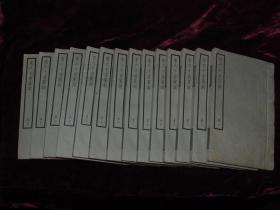

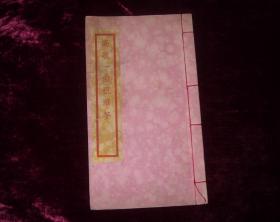
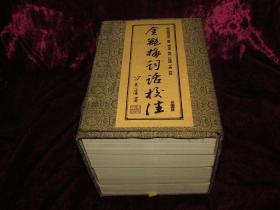
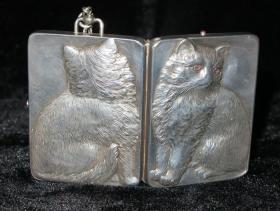


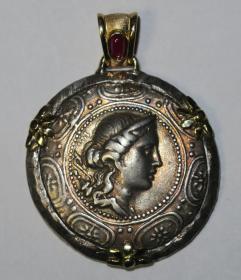








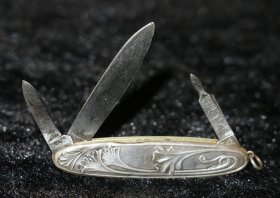

以下为对购买帮助不大的评价